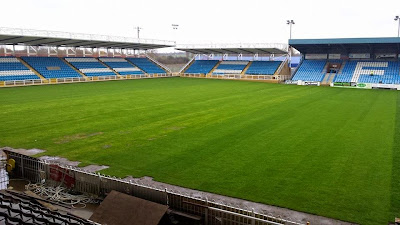Any sense of unease that Rovers may have felt about the absence of Ernie Barraclough from their front-row was quickly dispelled by the presence and form of Frank Hemingway. He came into the team as a youngster in November 1934, the same year Ernie retired and stayed there for sixteen seasons, a model of consistency and durability. Frank’s career total of 361 games, whilst impressive in itself, would have been much higher had it not been for a combination of events.
The period of the 1930s was one of almost unremitting struggle for Featherstone Rovers. Hemingway though benefited from club president Abe Bullock’s new policy of trying to hold onto quality players rather than simply selling every available player to the highest bidder. Consequently the team improved and years of hard slog in the front row finally brought some reward for Frank when he won a Yorkshire Cup winner’s medal in 1940, the first time the club had lifted that trophy. When World War Two started Frank was working in essential services as a miner at Sharlston colliery. When he left the pit due to ill health he was immediately called up into the Army towards the end of the war and sent abroad. At home on leave, he suffered a badly broken leg in a Christmas fixture against Castleford in 1946. This injury affected the rest of his career, and in fact he managed only thirteen games over four seasons between 1945 and 1949. In resilient style he bounced back though and he played in 38 games in his final full season of 1949/50. That same year he became one of the first Featherstone players to enjoy a testimonial, as previously players hardly ever received any kind of recompense for longevity. Various fund-raising events were held on his behalf throughout the year. Frank’s last game for the club was against Barrow in September 1950 after which he retired.
As anchor man of the pack, Hemingway was under no illusions as to the unglamorous nature of his job. Front row work in those days often involved simply moving from scrum to scrum up and down the field, so prevalent were they. In sixteen years of playing, Frank managed a grand total of five tries! He struck up a good working relationship with fellow props Jack Flaherty, Frank Dyson and Horace Lyman, as well as a variety of hookers: first Percy Morris, then Joe Golby, Jim Bowden and towards the end of his career future international Arthur Wood. Frank’s legacy was not at an end on his retirement when he passed the front-row torch to Ken Welburn; his grandson Ian Slater played for Rovers some 35 years later.


No comments:
Post a Comment